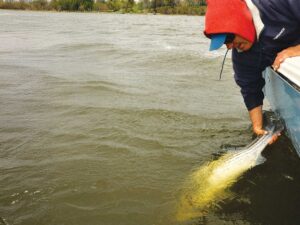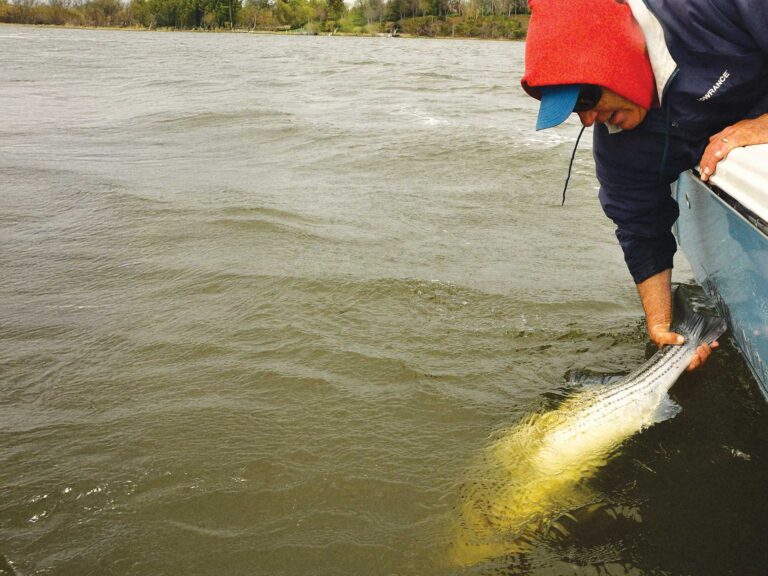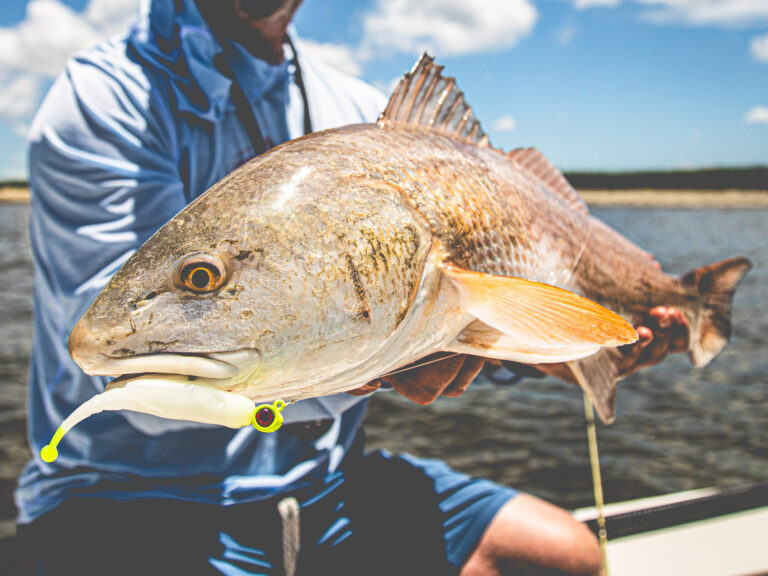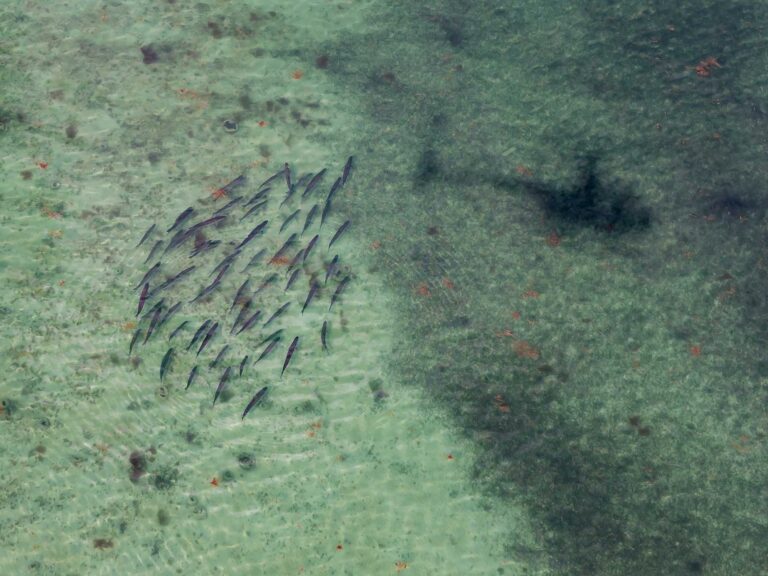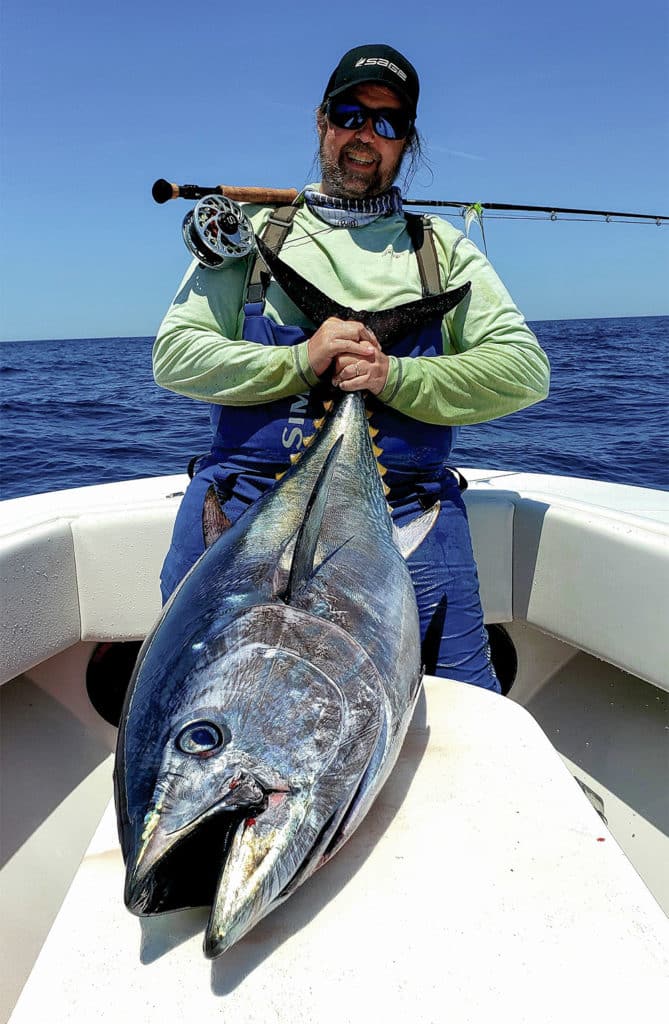
Catching a bluefin tuna on fly is hard, but for anglers up for the challenge, it’s the ultimate fishing experience.
The fish sometimes ignore dozens of presentations, and just when you’re starting to get discouraged, your fly disappears amidst a violent explosion, coils of loose fly line suddenly jump off the deck and, in a nano second, the line tightens and your reel screams loudly, as backing vanishes at alarming speed. Bluefin on!
The handle on your reel is now a blur, and you keep your knuckles clear or suffer the painful consequences. The captain responds to your excited shouts, getting the boat in gear, and a long, arduous fight ensues. Maybe you land the fish, maybe you don’t. But the exaltation you experience at that moment, when you can’t really believe you’re tied on to a bluefin, is sublime.
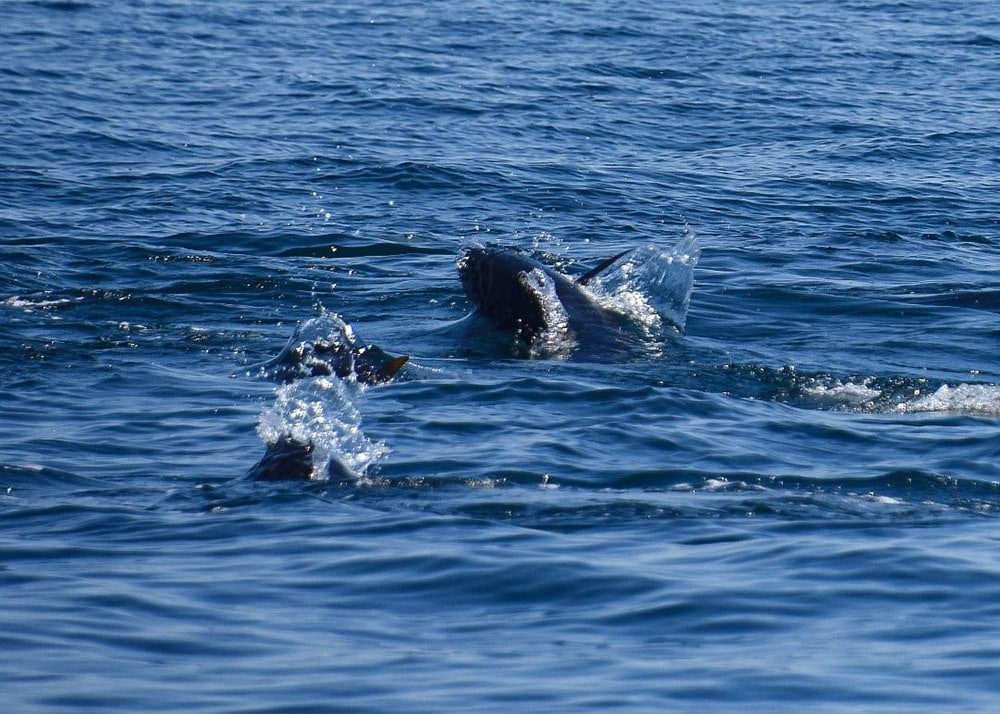
Best Times to Try
There are a few right instances when it’s worth it to throw a fly for bluefins. Blind-casting on sounder marks is not one of them. It is hard enough to stick one of those tuna on a jig or a big popper that pushes way more water than you ever could with a fly. Casting at busting fish, however, is a no-brainer. When bluefins are on the surface crushing bait, running-and-gunning often pays off. But with the fly rod, you’ve generally got to have good feeds to be successful. So, unless you see two or three fish popping here and there, forget about it.
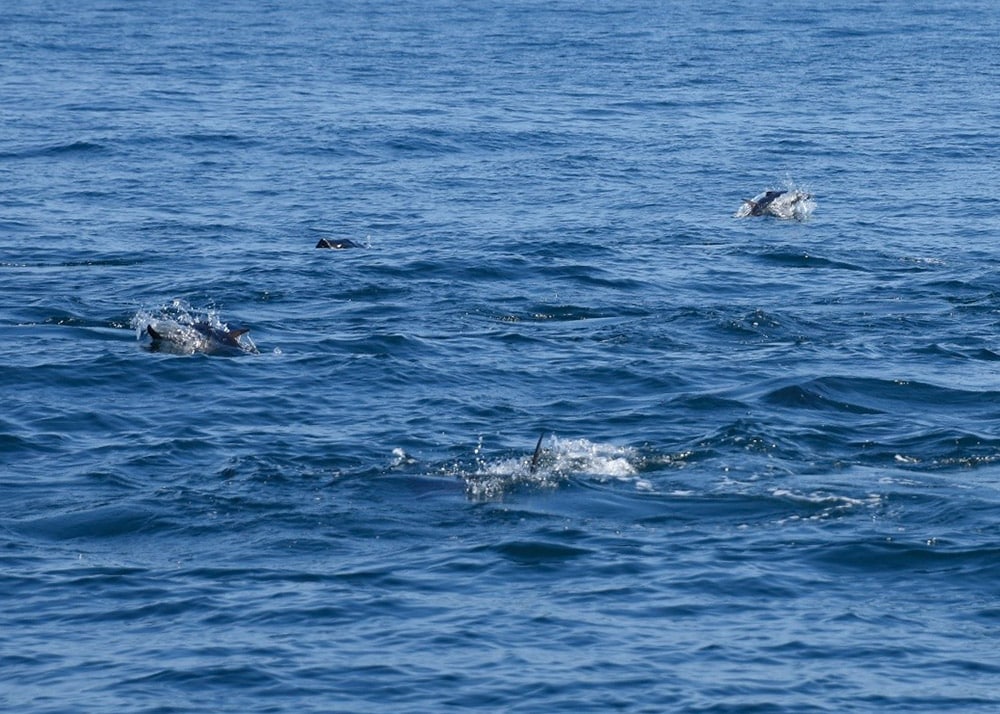
Bluefin tuna are notoriously finicky, so even if they are raging on the surface, don’t expect a home run. Sometimes you’ve got to make numerous casts with stick baits and poppers before you get a strike. Multiply that by 4 or 5 when fly fishing for a realistic estimation of your likely success. The truth is you need the right situation and some luck to get a bluefin on fly.
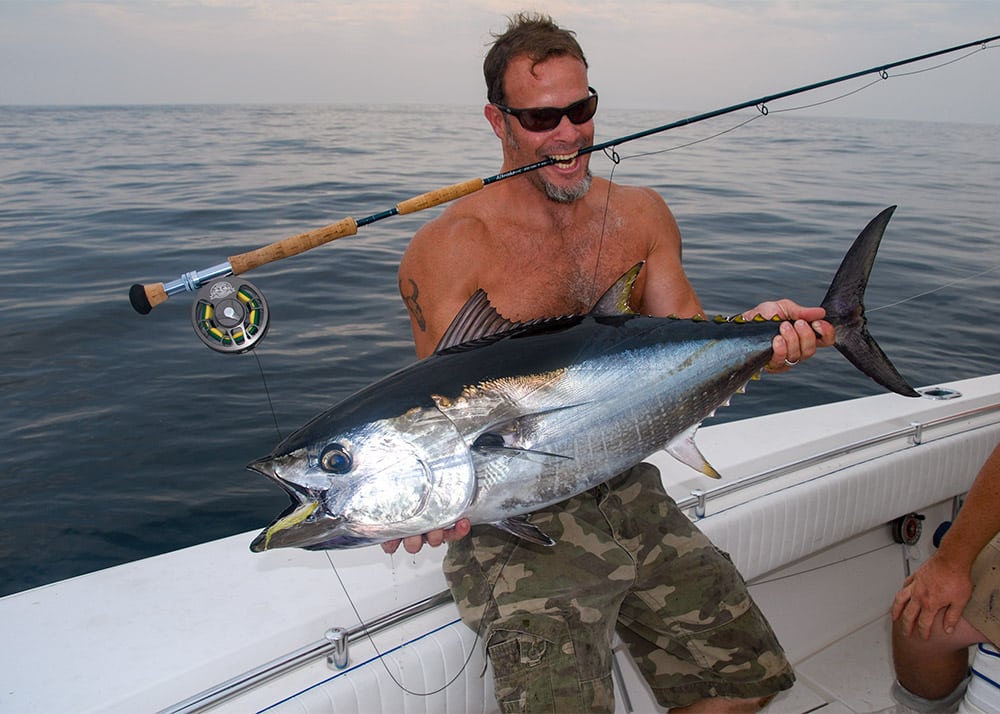
Of course, there are certain circumstances that greatly boost your chances, like when the fish are foraging on half-beaks. Then bluefins will eat a beer can if you throw it at them. And if you encounter pushing fish (when they are waking on the surface), that is an entirely different ball game, and may be the best time to try throwing a fly. Generally, the tuna are on very small bait when they do this, so a fly may actually draw more strikes than a big plug. Getting ahead of pushing fish, and placing a fly in front of them is the key, so pay close attention at the direction in which the bluefins are tracking.
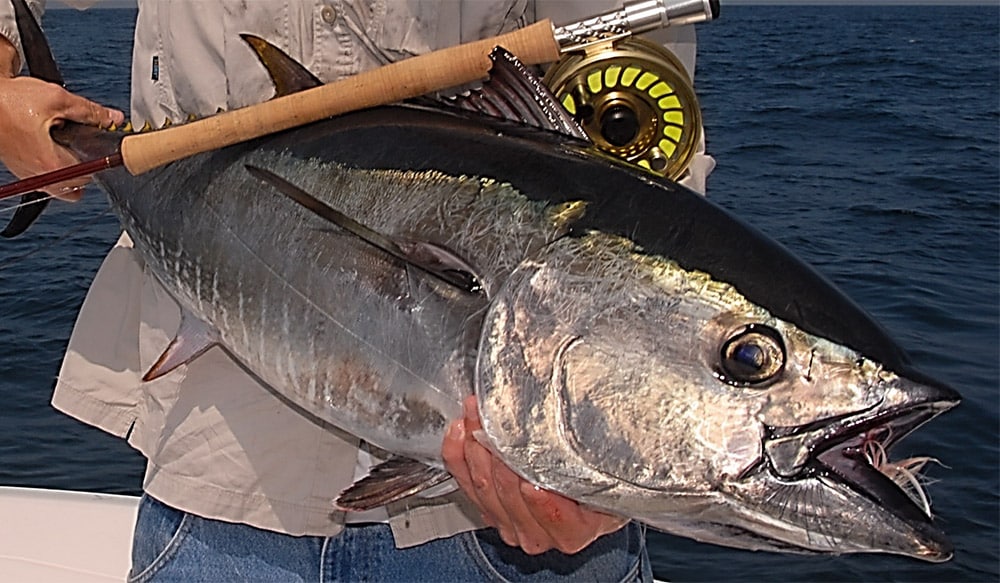
Gearin’ Up
If you are serious about catching a bluefin on fly, plan on spending some money for the right gear. You don’t want to put in all the time and effort it takes to hook one, only to suffer the heartbreak of losing the fish to equipment failure.
Though it may seem obvious, it’s worth noting that using fly gear isn’t practical on tuna exceeding 80 or 100 pounds. Battling and landing 150-pounds or more of what may be the fastest, strongest fish in the ocean isn’t exactly a winning proposition. While it has been done, most of us mere mortals should understand the limitations of fly gear, and the effects of an exhaustingly prolonged battle on both the quarry and the angler.
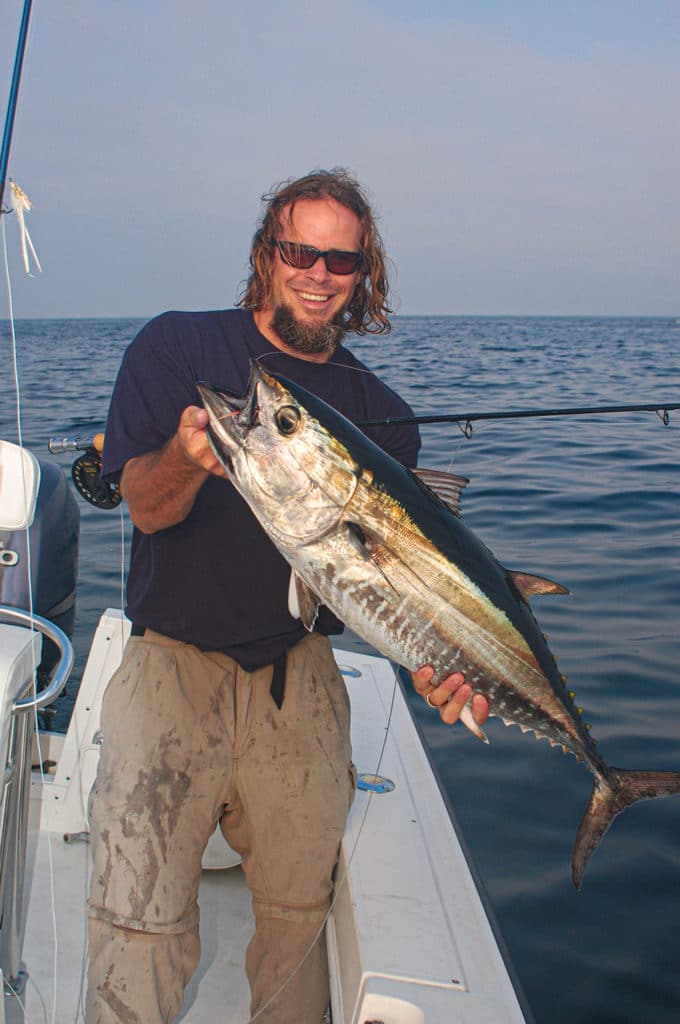
That said, 14-weight fly rods are what we use, but in recent years a few rod manufactures have been making 16-weights. Keep in mind, however, that the heftier the fly outfit, the heavier the weight, and the harder it is to cast. And this is critical when you have to get the fly out there quickly. Truth be told, 16-weights are like casting with a broomstick. While 14-weights aren’t much better, you really need at least that to beat tuna weighing north of 70-pounds.
You can scale down to 12-weights when targeting schoolies in the 20- to 40-pound range, but even then, you better have a darn good reel with a drag that will handle tuna’s blistering runs. If you’ve done some fly fishing for false albacore, skipjacks, or blackfins, you can imagine the sort of speed and power of tuna 8 to 10 times that size.
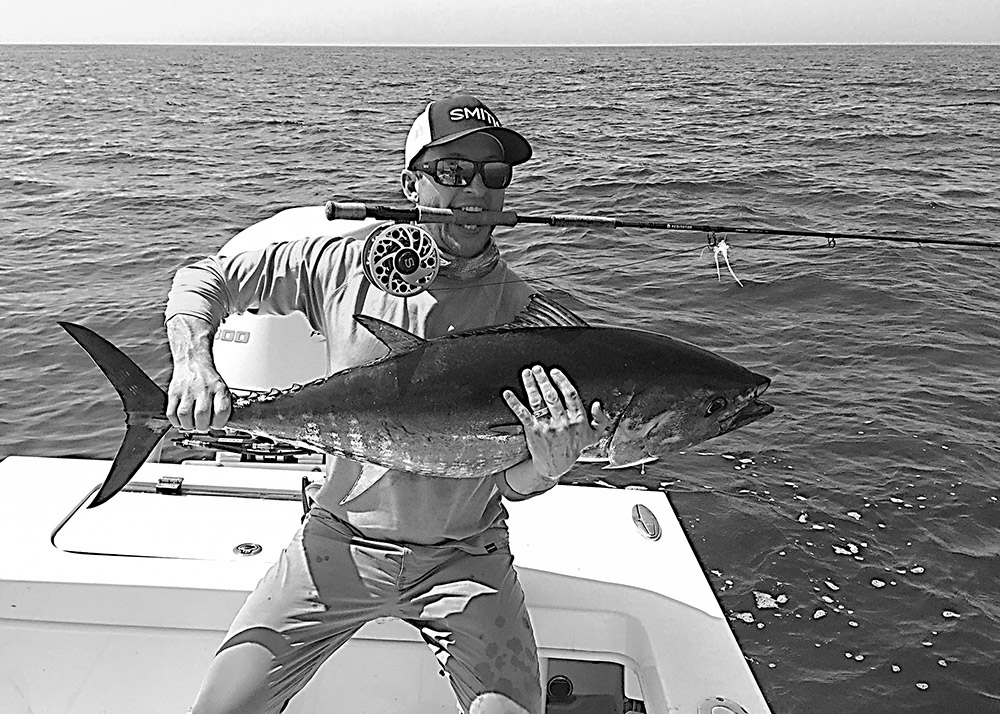
Line and Leader Choices
When it come to fly-lines, Rio makes the Leviathian big-game series lines, which have extraordinary breaking strength, and are designed for quick, long casts with minimal false casting. We generally use the sinking version, since it enables the fly to get down a bit. Not a lot, but enough to where it rides some 5 feet below the surface, despite the quick stripping that’s often required to warrant a strike from bluefin tuna.
Regarding leaders, I see no need for the tapered kind. We simply use 8 or 9 feet of straight 80-pound fluorocarbon, sometimes 60 when fish appear particularly wary, but certainly nothing less.
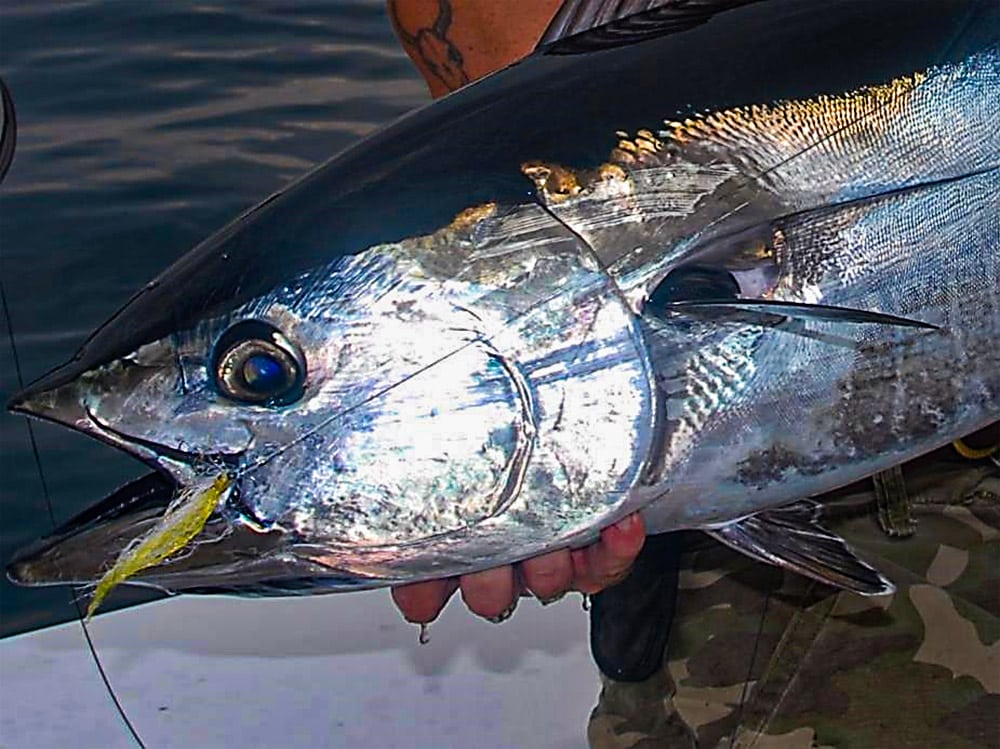
Golden Retrieve
So what’s the ideal retrieve for bluefins? It really varies with the circumstances. We’ve found blitzing fish want it very fast, and pushing fish want it very slow. But there are times where all convention goes out the window, and you simply have to figure it out. Overall, I recommend one or two very hard and deliberate strips, then a pause. That tends to cover both scenarios, and generally draws strikes when nothing else will.
The most important thing to remember is that sticking bluefin on a fly isn’t easy, but if you have patience and keep at it, success will eventually come. And I promise the reward is extraordinary!


